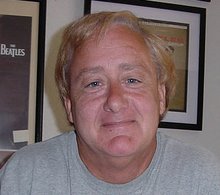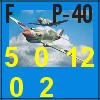
Although General Yamamoto had been killed before the Japanese were ready to execute it, his daring plan, like his Pearl Harbor success in 1941, was now aimed at the Panama Canal sometime in 1943-45. Yamamoto, who had gone to college in the US, was a strategic thinker and had always felt that the war "needed to touch America" to jostle their nerves. Planned raids included attacking San Francisco or cities on the East Coast using their new long range submarines with aircraft. These were the I-400 class, each capable of carrying and launching three bombers. The submarines could travel 37000 miles before needing replenishment. They could go anywhere, conduct airstrikes and move onto the next target. These airplanes had floats, they were called "Seiran" with a top speed of 350 MPH and had a range of over 600 miles.They could carry one 1800 pound torpedo or an equal amount of bombs. It was one of the few planes that could dive bomb and torpedo bomb.
Yamamoto planned the Panamanian Canal attack. The objective was to render it useless by sending 10 Seirans to bomb the Gatun Lock with six 1800 lb. torpedoes and an equal amount of bombs. If successful, it would prevent the U.S. Atlantic fleet from crossing to the Pacific. An air strike force would launch from the Gulf of Panama, cross Panama to the Caribbean Sea at low altitude, surprise the defenders by approaching from the Atlantic side, and bomb the critical Gatun Locks, which would put the canal out of operation for six months. One plan was to have the aircraft return to the subs, land and retrieved. Then, move on to another target. However, this was revised to make it a "kamikaze" attack. The pilots studied a large-scale model of the lock system and memorized important features of the canal, just as their predecessors did before attacking Pearl Harbor. But, time was against the plan as the pilots could not learn steep dive bomber attacks in time nor could learn torpedo attacks.
This plan would buy Japan time to recover from its many defeats after 1943. However, it was also 1945, Yamamoto was now dead and the IJN decided in June to attack the US base at Ulithi atoll in the Carolinas.
The attack on Panama, had it proceeded, would've been done at night. Assuming even some success, the delay could have been serious for US ships, however, there were still hundreds of ships on the West Coast, in Hawaii and at Ulithi Atoll at this time. So, the impact would have been much more psychological that would've sent shock waves to America. The canal area was defended by two key airbases, Howard and France, one at each end of the canal. At France AFB, the 24th, 43rd Fighter squadrons sat with P39s and P38s. At Howard AFB, the 51st and 30th Squadrons with the same aircraft. While it is hard to believe that the US could have suffered a second "Pearl Harbor" the element of total surprise remained with the Japs in this plan. A night attack would ensure most of the fighters would be grounded. A day attack would truly be a suicide run.
The Ulithi planned attack was a near thing. Both subs were in position, ready to launch aircraft the next day (August 17), when it was called off and Japan surrendered. This atoll was a major USN staging base, not a full fledged naval base by any means. Its only defenses were from the Marine VMTB 232 (12 Avengers) and VMFA 542 (18 F4F). The ships in the area came to hundreds at this time and the Japs targeted the carriers but had only one recon plane to spot them with. Also, this attack only allowed six Seirans to find a target.
Of the two, Yamamoto's visionary strategic target of Panama, taking the war to America, could have had much longer last impact than the pin prick that Ulithi, which at best, might of sunk one carrier.


No comments:
Post a Comment